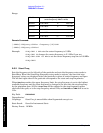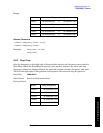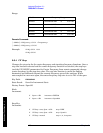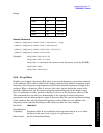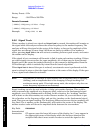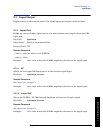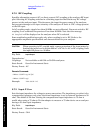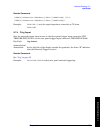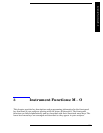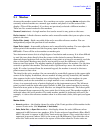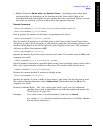
172 Chapter2
Instrument Functions: A - L
Input/Output
Instrument Functions: A - L
2.7.2 RF Coupling
Specifies alternating current (AC) or direct current (DC) coupling at the analyzer RF input
port. Selecting AC coupling switches in a blocking capacitor that blocks any DC voltage
present at the analyzer input. This decreases the input frequency range of the analyzer,
but prevents damage to the input circuitry of the analyzer if there is a DC voltage present
at the RF input.
In AC coupling mode, signals less than 20 MHz are not calibrated. You must switch to DC
coupling to see calibrated frequencies of less than 20 MHz. Note that the message
DC Coupled will be displayed on the analyzer when DC is selected.
Some amplitude specifications apply only when coupling is set to DC. Refer to the
appropriate amplitude specifications and characteristics for your analyzer.
CAUTION When operating in DC coupled mode, ensure protection of the input mixer by
limiting the input level to within 200 mV of 0 Vdc. In AC or DC coupling, limit
the input RF power to +30 dBm.
Key Path:
Input/Output
Dependencies/
Couplings: Not available on 40 GHz or 50 GHz analyzers.
State Saved: Saved in Instrument State
Factory Preset: AC
Remote Command:
:INPut:COUPling AC|DC
:INPut:COUPling?
Example: INP:COUP DC
2.7.3 Input Z Corr
Sets the input impedance for voltage-to-power conversions. The impedance you select is for
computational purposes only, since the actual impedance is set by internal hardware to 50
ohm. The default is 50 ohm. Setting the computational input impedance to 75 ohm is
useful when using a 75 ohm to 50 ohm adapter to measure a 75 ohm device on an analyzer
having a 50 ohm input impedance.
Key Path:
Input/Output
State Saved: Saved in Instrument State
Factory Preset: 50 Ω



